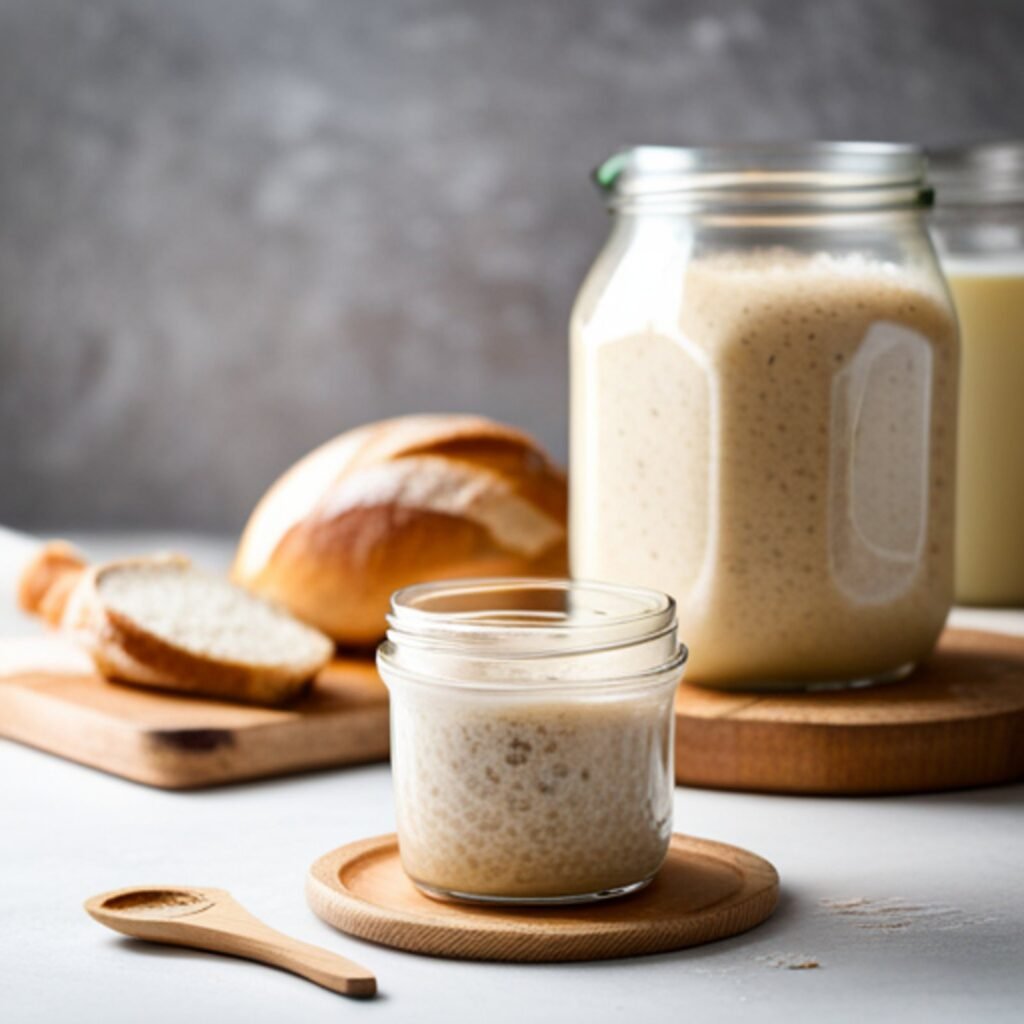Levain (Pre-Ferment)
Learn what levain (prefermentation) is, why it matters in sourdough baking, and how it improves flavor, rise, and texture. Step-by-step tips for using levain at home.

Instructions
Creating the Levain:
- In a clean container, mix 20 g of active sourdough starter with 100 g of flour and 100 g of lukewarm water.
- Stir until no dry flour remains.
- Cover loosely with a cloth or plastic wrap and leave in a warm spot (21–24°C / 70–75°F) for 4–6 hours, or until it has doubled in size and looks bubbly and active.
Testing the Levain:
- Drop a small spoonful into a glass of room-temperature water.
- If it floats, it’s ready to use.
- If it sinks, give it another hour or two, then test again.
What’s Happening During This Phase
Levain is essentially a “boosted” version of your starter—built fresh for the specific purpose of baking. It ensures your dough has a strong, active population of wild yeast and bacteria ready to leaven it.
- Wild Yeast & Bacteria Activity: Yeast ferments flour sugars, creating carbon dioxide (rise) and alcohol, while lactic acid bacteria produce lactic and acetic acids (flavor).
- Enzyme Activity: Natural enzymes break down starches into simple sugars, feeding the microbes and enriching dough flavor.
- Temperature & Time: Warmer conditions accelerate fermentation; cooler ones slow it down.
- The Float Test: A reliable indicator of readiness—gas-filled levain floats because it’s airy and well-fermented.
Using levain not only helps your bread rise but also deepens the flavor and improves shelf life. It’s the bridge between your starter and your final dough, combining science, timing, and craft into one essential step.